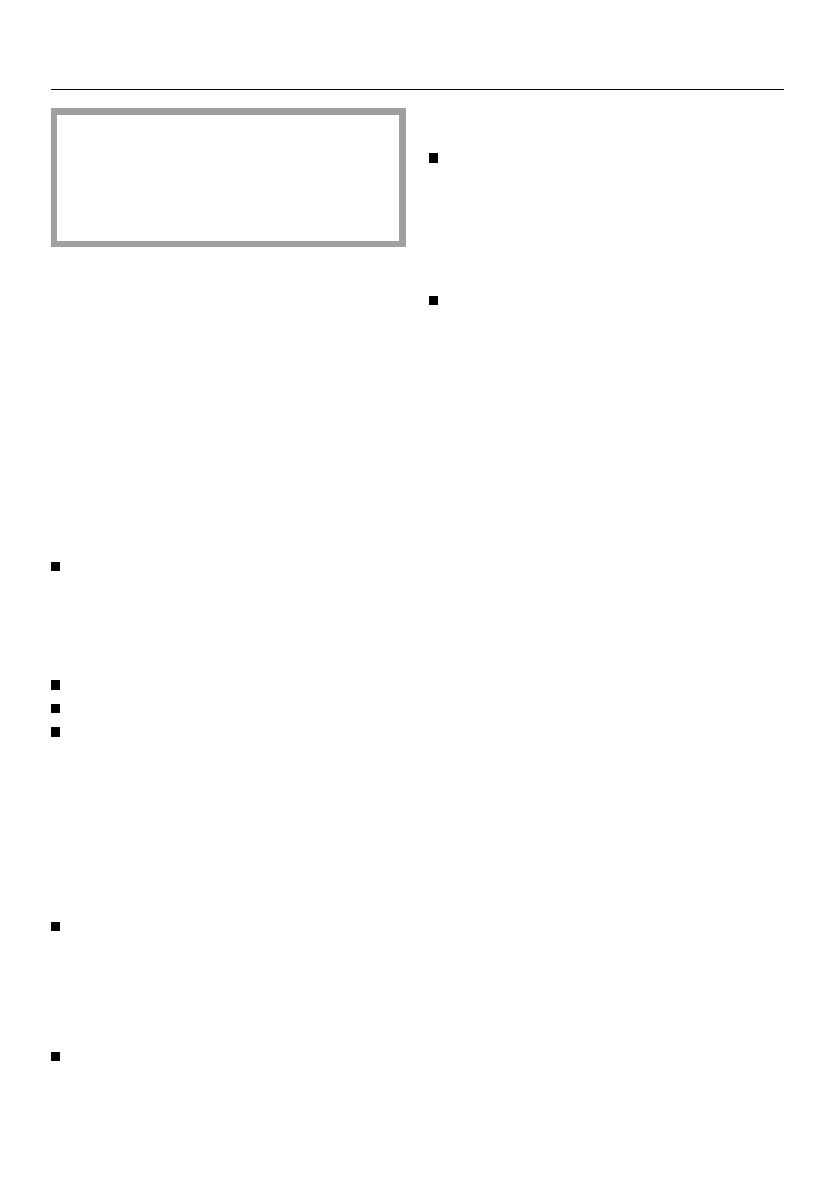
Problem solving guide
Electrical appliances should only be
repaired by qualified personnel. In-
correctly repaired machines may
pose a considerable risk to the
user.
There are, however, minor faults which
can be corrected without contacting
the Service Department.
The tumble dryer fails to start
when switched on.
Check whether the “On” indicator lamp
lights up. If so, failure to start may be
due to an incorrect selection procedure
sequence when switching on the ma-
chine.
Repeat the switch-on procedure in
the correct sequence (see P. 10).
If the “On” indicator lamp does not light
up, check that
the “On/Off” button is depressed
the door is properly closed
the mains plug is plugged in and the
fuse or circuit breaker has not
tripped.
Laundry is not sufficiently dry.
The load consists of dissimilar items in
terms of size and fabric.
Select a longer drying programme
next time.
Small loads or individual items may
cause the programme to terminate pre-
maturely.
Small loads should therefore be
“time-dried”.
Drying times are too long.
Clean the fluff filter in the door.
The laundry was not spun for a suffi-
ciently long time.
Ventilation is inadequate (e.g. in a small
room).
When the machine is in operation,
open a door or the window.
Items made of synthetic fibres
are charged with static elec-
tricity after drying.
Static charge can be reduced by ad-
ding fabric conditioner during the final
rinse cycle in the washing machine, or
a fabric conditioner sheet in the tumble
dryer.
Formation of fluff
Fluff is principally the result of friction
when items are worn and washed. Ma-
chine-drying hardly causes any fluff to
form and, as has been established by
research institutes, has no effect on the
lifetime of fabrics.
15


















